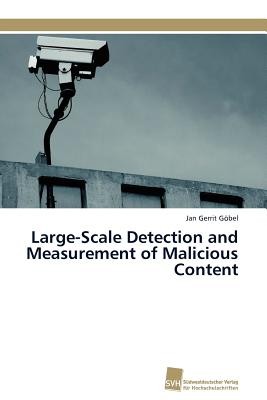
- We will send in 10–14 business days.
- Publisher: Sudwestdeutscher Verlag Fur Hochschulschriften AG
- Year: 2011
- Pages: 236
- ISBN-10: 383812720X
- ISBN-13: 9783838127200
- Format: 15.2 x 22.9 x 1.4 cm, softcover
- Language: English
- SAVE -10% with code: EXTRA
Large-Scale Detection and Measurement of Malicious Content (e-book) (used book) | bookbook.eu
Reviews
Description
Many different network and host-based security solutions have been developed in the past to counter the threat of autonomously spreading malware. Among the most common detection techniques for such attacks are network traffic analysis and the so-called honeypots. In this thesis, we introduce two new malware detection sensors that make use of the above mentioned techniques. The first sensor called Rishi, passively monitors network traffic to automatically detect bot infected machines. The second sensor called Amun follows the concept of honeypots and detects malware through the emulation of vulnerabilities in network services that are commonly exploited. Both sensors were operated for two years and collected valuable data on autonomously spreading malware in the Internet. From this data we were able to, for example, study the change in exploit behavior and derive predictions about preferred targets of todays' malware.
EXTRA 10 % discount with code: EXTRA
The promotion ends in 20d.21:47:09
The discount code is valid when purchasing from 10 €. Discounts do not stack.
- Publisher: Sudwestdeutscher Verlag Fur Hochschulschriften AG
- Year: 2011
- Pages: 236
- ISBN-10: 383812720X
- ISBN-13: 9783838127200
- Format: 15.2 x 22.9 x 1.4 cm, softcover
- Language: English English
Many different network and host-based security solutions have been developed in the past to counter the threat of autonomously spreading malware. Among the most common detection techniques for such attacks are network traffic analysis and the so-called honeypots. In this thesis, we introduce two new malware detection sensors that make use of the above mentioned techniques. The first sensor called Rishi, passively monitors network traffic to automatically detect bot infected machines. The second sensor called Amun follows the concept of honeypots and detects malware through the emulation of vulnerabilities in network services that are commonly exploited. Both sensors were operated for two years and collected valuable data on autonomously spreading malware in the Internet. From this data we were able to, for example, study the change in exploit behavior and derive predictions about preferred targets of todays' malware.


Reviews